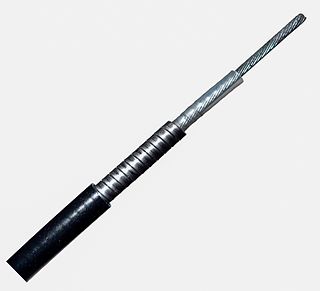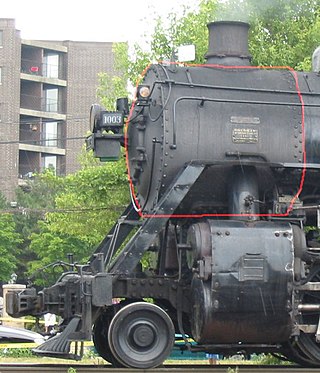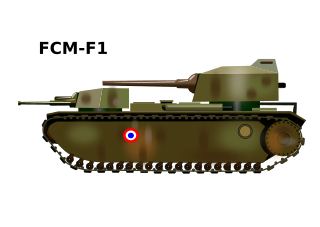
A periscope is an instrument for observation over, around or through an object, obstacle or condition that prevents direct line-of-sight observation from an observer's current position.

A Bowden cable is a type of flexible cable used to transmit mechanical force or energy by the movement of an inner cable relative to a hollow outer cable housing. The housing is generally of composite construction, consisting of an inner lining, a longitudinally incompressible layer such as a helical winding or a sheath of steel wire, and a protective outer covering.

An alidade or a turning board is a device that allows one to sight a distant object and use the line of sight to perform a task. This task can be, for example, to triangulate a scale map on site using a plane table drawing of intersecting lines in the direction of the object from two or more points or to measure the angle and horizontal distance to the object from some reference point's polar measurement. Angles measured can be horizontal, vertical or in any chosen plane.

The M48 Patton is an American first-generation main battle tank (MBT) introduced in February 1952, being designated as the 90mm Gun M48, armored, full-tracked, combat vehicle of the medium-gun tank class." It was designed as a replacement for the M26 Pershing, M4 Sherman, M46 and M47 Patton tanks, and was the main battle tank of the U.S. Army and U.S. Marine Corps in the Vietnam War. Nearly 12,000 M48s were built, mainly by Chrysler and American Locomotive Company, from 1952 to 1961. The M48 Patton was the first U.S. medium gun tank with a four-man crew, featuring a centerline driver's compartment and no bow machine gunner. As with nearly all new armored vehicles it had a wide variety of suspension systems, cupola styles, power packs, fenders and other details among individual tanks.

The char 2C, also known as the FCM 2C, was a French post WWI heavy tank landship, later considered a super-heavy tank. It was developed during World War I but not deployed until after the war. It was, in total volume or physical dimensions, the largest operational tank ever made.

The Cupola is an ESA-built observatory module of the International Space Station (ISS). Its name derives from the Italian word cupola, which means "dome". Its seven windows are used to conduct experiments, dockings and observations of Earth. It was launched aboard Space Shuttle Endeavour's mission STS-130 on 8 February 2010, and attached to the Tranquility module. With the Cupola attached, ISS assembly reached 85 percent completion. The Cupola's central window has a diameter of 80 cm (31 in).

The Mark VIII tank also known as the Liberty or The International was a British-American tank design of the First World War intended to overcome the limitations of the earlier British designs and be a collaborative effort to equip France, the UK and the US with a single heavy tank design.

A smokebox is one of the major basic parts of a steam locomotive exhaust system. Smoke and hot gases pass from the firebox through tubes where they pass heat to the surrounding water in the boiler. The smoke then enters the smokebox, and is exhausted to the atmosphere through the chimney. Early locomotives had no smokebox and relied on a long chimney to provide natural draught for the fire but smokeboxes were soon included in the design for two specific reasons. Firstly and most importantly, the blast of exhaust steam from the cylinders, when directed upwards through an airtight smokebox with an appropriate design of exhaust nozzle, effectively draws hot gases through the boiler tubes and flues and, consequently, fresh combustion air into the firebox. Secondly, the smokebox provides a convenient collection point for ash and cinders ("char") drawn through the boiler tubes, which can be easily cleaned out at the end of a working day. Without a smokebox, all char must pass up the chimney or it will collect in the tubes and flues themselves, gradually blocking them.

The Char B1 was a French heavy tank manufactured before World War II.

The Hotchkiss H35 or Char léger modèle 1935 H was a French cavalry tank developed prior to World War II. Despite having been designed from 1933 as a rather slow but well-armoured light infantry support tank, the type was initially rejected by the French Infantry because steering proved difficult during cross-country use, and was instead adopted in 1936 by the French Cavalry arm.

The FCM F1 was a French super-heavy tank developed during the late Interbellum by the Forges et Chantiers de la Méditerranée (FCM) company. Twelve were ordered in 1940 to replace the char 2C, but France was defeated before construction could begin, a wooden mock-up being all that was finished. The FCM F1 was large and elongated, and had two turrets: one in front and one in the back, with a single high-velocity gun in each turret. The rear turret was superfiring, meaning it was raised higher and fired over the top of the forward one, a common practice in naval vessels. The vehicle was intended to be heavily armoured. Its size and protection level made it by 1940, at about 140 tons, the heaviest tank ever to have actually been ordered for production. Despite two engines its speed would have been low. The primary purpose of the tank was to breach German fortification lines, not to fight enemy tanks. The development path of the FCM F1 was extremely complex, due to the existence of a number of parallel super-heavy tank projects with overlapping design goals, the specifications of which were regularly changed. For each project in turn several companies submitted one or more competing proposals.

The ARL 44 was a French heavy tank and tank destroyer, the development of which started just before the end of the Second World War. Only sixty of these tanks were ever completed, from 1949 onwards. The type proved to be unsatisfactory and only entered limited service. The tank was phased out in 1953.

The Char D1 was an Interwar French light tank.
The Char G1 was a French replacement project for the Char D2 medium tank. Several prototypes from different companies were developed from 1936 onwards, but not a single one had been fully completed at the time of the Fall of France in 1940. The projects represented some of the most advanced French tank design of the period and finally envisaged a type that would have been roughly equal in armament and mobility to later World War II standard tanks of other nations, such as the Soviet T-34 and the American M4 Sherman, but possessing several novel features, such as gun stabilisation, a semi-automatic loader and an optical rangefinder.

A super-heavy tank is any tank that is notably beyond the standard of the class heavy tank in either size or weight relative to contemporary vehicles.

The AMX-40 was a French main battle tank developed by GIAT during the latter stages of the Cold War as an export tank to replace the earlier AMX-32. Designed to be an inexpensive tank orientated towards militaries with smaller defence budgets, the AMX-40 featured a lightly armoured hull and good mobility reminiscent of previous French MBTs with a powerful 120 mm cannon. It however failed to attract interest and sales, rendering the project a failure, being discontinued in 1990.

The AMX 50 or AMX-50 is a French heavy tank designed in the immediate post Second World War period. It was proposed as, in succession, the French medium, heavy, and main battle tank, incorporating many advanced features. However, it was cancelled in the late 1950s due to unfavourable economic and political circumstances after serious delays in development.

The LT vz. 34, formally designated as Lehký tank vzor 34 was a Czechoslovak-designed light tank used mainly by Slovakia during World War II. Its suspension was based on that of the Carden-Loyd tankette, of which the Czechs had purchased three, plus a manufacturing license, in 1930. Dissatisfied with the prototypes of the Tančík vz. 33 tankette, the Czech Army decided that it would be easier to design a light tank from scratch rather than modify a tankette's chassis to carry a fully rotating armored turret. 50 were built, the last of which was delivered during 1936, of which the Germans captured 22 - including the prototype, when they occupied Bohemia-Moravia in March 1939, but they promptly scrapped them. The Slovaks seized the remaining 27 when they declared independence from Czechoslovakia at the same time. In Slovak service it only saw combat during the Slovak National Uprising.

The chimney is the part of a steam locomotive through which smoke leaves the boiler. As well, steam locomotive exhaust systems typically vent cylinder steam exhaust through the chimney, to enhance the draught through the boiler. Chimneys are designed to carry the exhaust steam and smoke clear of the driver's line of sight while remaining short enough to clear overhead structures. Some chimneys included apparatus to suppress the dispersal of sparks.

French development into tanks began during World War I as an effort to overcome the stalemate of trench warfare, and largely at the initiative of the manufacturers. The Schneider CA1 was the first tank produced by France, and 400 units were built. The French also experimented with various tank designs, such as the Frot-Laffly landship, Boirault machine and Souain experiment. Another 400 Saint-Chamond tanks were manufactured from April 1917 to July 1918 but they were underpowered and were of limited utility because the caterpillar tracks were too short for the tank's length and weight. The most significant French tank development during the war was the Renault FT light tank, which set the general layout for future tank designs and was used or redesigned by various military forces, including those of the United States.


















